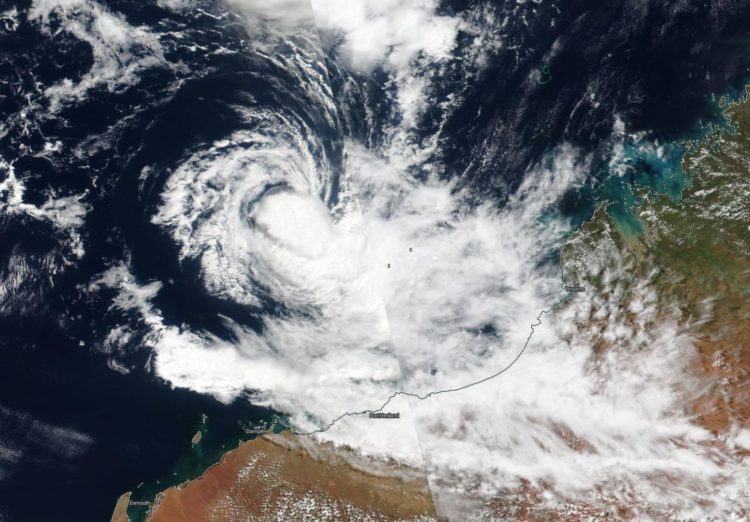
Credit: Credit: NASA Worldview, Earth Observing System Data and Information System (EOSDIS)
NASA-NOAA’s Suomi NPP satellite passed over the Southern Indian Ocean and provided forecasters with a visible image of newly formed Tropical Storm 21S.
The Visible Infrared Imaging Radiometer Suite (VIIRS) instrument aboard Suomi NPP provided a visible image of Tropical Cyclone 21S that revealed strong thunderstorms circling the center of circulation. Strong storms were also in the southeastern quadrant of the storm which extended to the coast of Western Australia.
At 0900 UTC, (5 a.m. EDT) Tropical Cyclone 21S was located near latitude 16.4 degrees south and longitude 116.9 degrees east, about 253 nautical miles north-northwest of Port Hedland, Australia. 21S was moving to the south and had maximum sustained winds near 35 knots (40 mph/65 kph). The storm is not expected to strengthen much before it makes landfall in Western Australia.
The Joint Typhoon Warning Center (JTWC) expects 21S to move south-southeast and pass over Exmouth as a tropical storm. Exmouth is a town located on the tip of the North West Cape in Western Australia. JTWC forecasters expect that 21S will dissipate after two days.
Tropical cyclones/hurricanes are the most powerful weather events on Earth. NASA’s expertise in space and scientific exploration contributes to essential services provided to the American people by other federal agencies, such as hurricane weather forecasting.
###
For updated forecasts from the ABM, visit: http://www.
By Rob Gutro
NASA Goddard Space Flight Center
Media Contact
Rob Gutro
[email protected]
Original Source
https:/





